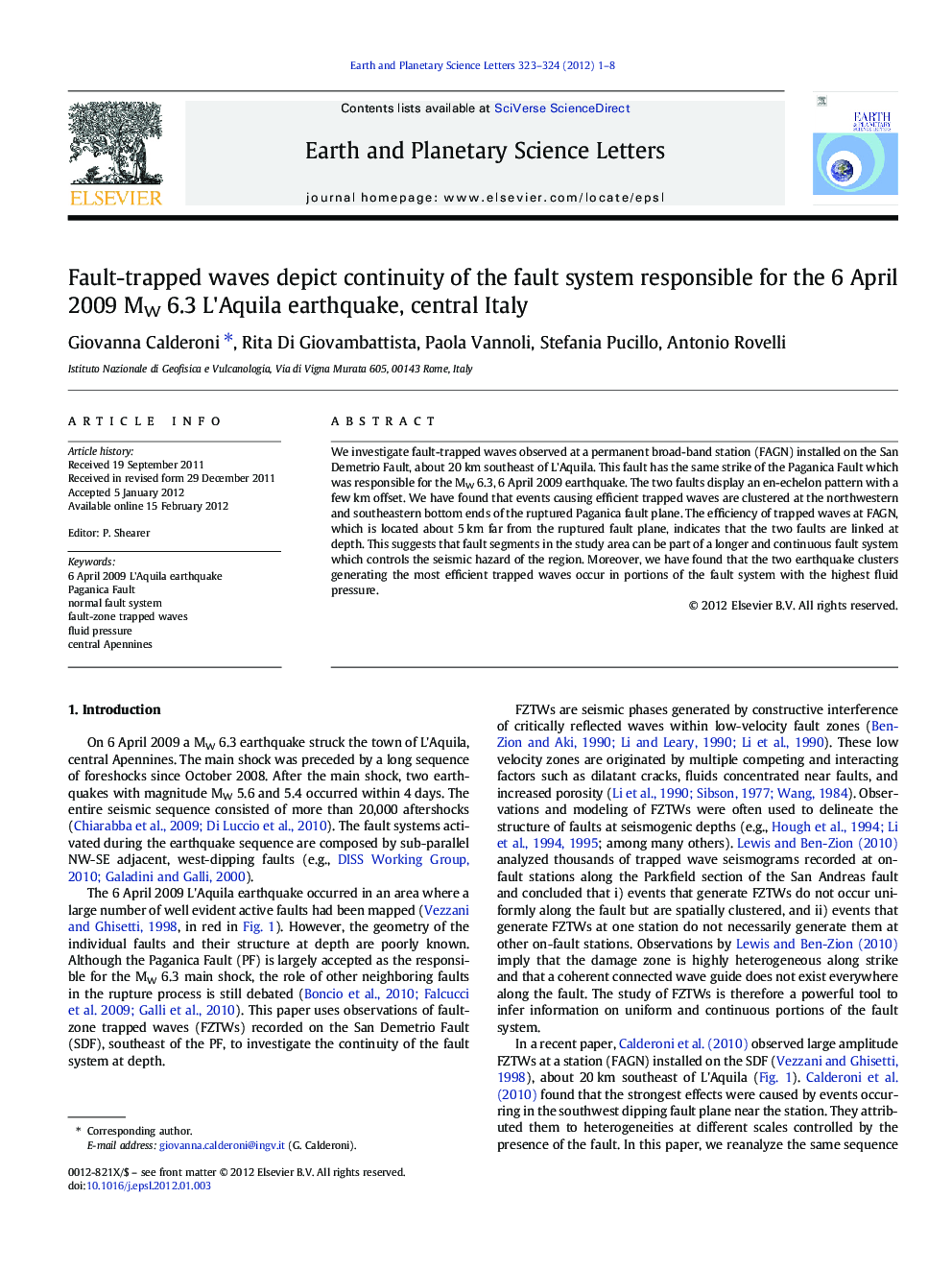| Article ID | Journal | Published Year | Pages | File Type |
|---|---|---|---|---|
| 4677550 | Earth and Planetary Science Letters | 2012 | 8 Pages |
We investigate fault-trapped waves observed at a permanent broad-band station (FAGN) installed on the San Demetrio Fault, about 20 km southeast of L'Aquila. This fault has the same strike of the Paganica Fault which was responsible for the MW 6.3, 6 April 2009 earthquake. The two faults display an en-echelon pattern with a few km offset. We have found that events causing efficient trapped waves are clustered at the northwestern and southeastern bottom ends of the ruptured Paganica fault plane. The efficiency of trapped waves at FAGN, which is located about 5 km far from the ruptured fault plane, indicates that the two faults are linked at depth. This suggests that fault segments in the study area can be part of a longer and continuous fault system which controls the seismic hazard of the region. Moreover, we have found that the two earthquake clusters generating the most efficient trapped waves occur in portions of the fault system with the highest fluid pressure.
► We observe and model fault trapped waves during the 2009 L'Aquila sequence. ► Two largest-amplitude clusters occur in fluid over-pressure zones at the fault tips. ► Independent results yield changes of elastic parameters with the largest foreshock. ► Seismic signals indicate that two ruptured fault segments are continuous at depth. ► Close agreement to results on maximum magnitude coming from Paleoseismology.
